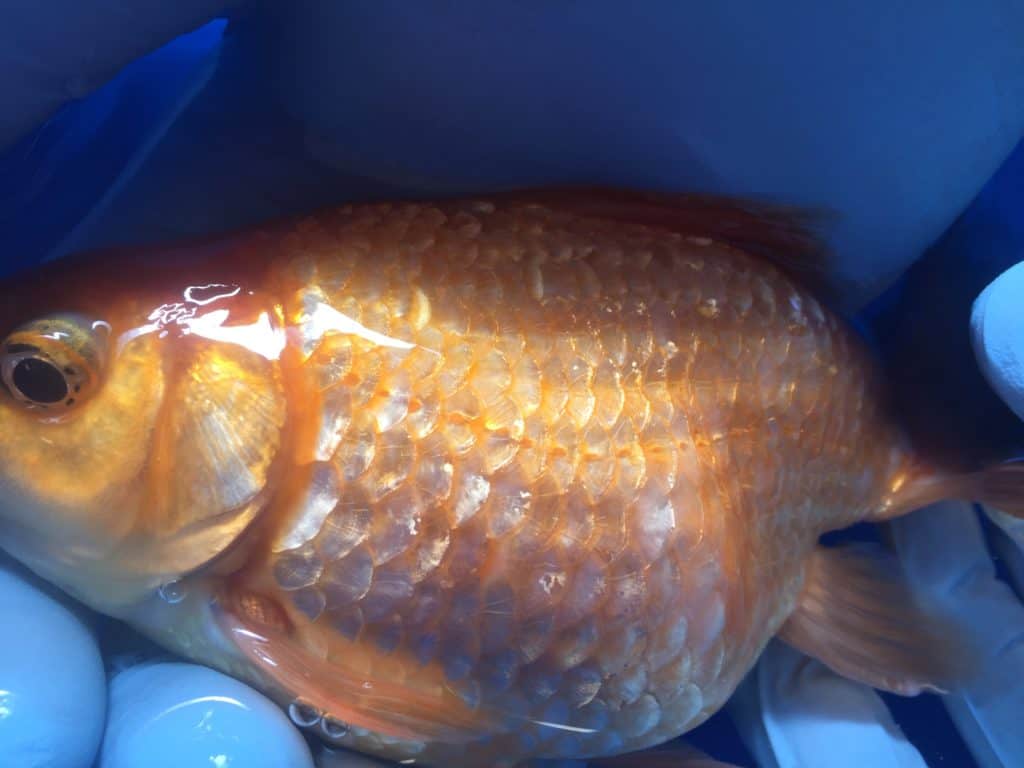How does a fish interact with its watery environment? They have many of the same senses as we do: sight, taste, touch, smell and hearing. But, did you know that fish can sense vibrations in the water around them using a special organ called a lateral line? If you look closely at the side of any fish, you will see small holes along the lateral midline. Some fish will have a wavy lateral line or even curl up around their head.

These little holes contain a gel-like medium and tiny hair cells. These hair cells pick up vibrations in the water and pass them along to the brain. This is how fish are able to school together in tight clumps and can feel your net moving towards them from behind. This the main reasoning behind the “don’t tap on the tank” warning. Tapping on the side of a fish tank is the human equivalent of having your body right next to multiple loudspeakers. You can feel your entire body vibrating from the noise. This is how a fish feels when you tap on the side of their tank and send pulses throughout the water. And remember, water is a much better conductor than air.
What does the lateral line have to do with where I place my fish tank?
The same sensation occurs when you have a speaker with music next to your tank, or a 24-hour gym facility moves next door to your fish hospital. Bass (frequency, not the fish) carries very strong vibrations and with constant bombardment of the lateral line, fish get stressed, and like in humans, decreased immune function. People are able to walk away from sources of stress, but not fish. By continuing to stress out your animals with vibrations, you can kill them. Death occurs secondary to a significantly weakened immune system allowing other bacteria and pathogens to take over.
So, don’t be a Darla. Keep your fingers, speakers and gyms to yourself.
A Finding Nemo fan? Do you know the names of all of Nemo’s friends?

Pingback: How Far Can Betta Fish See? Beyond the Glass